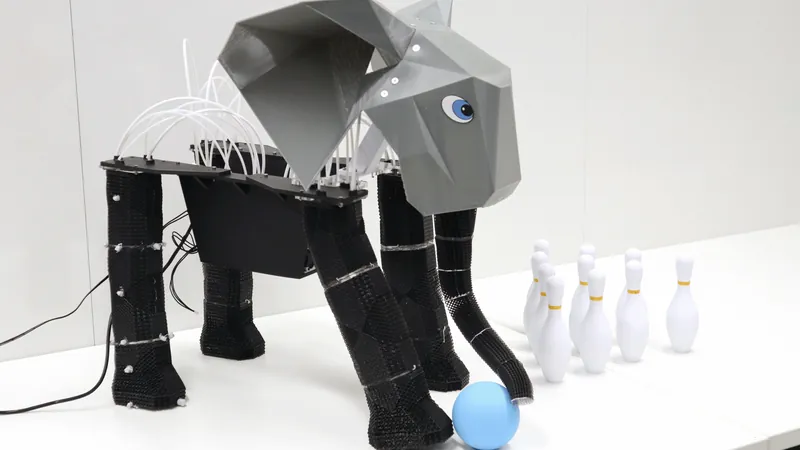
The Amazing Science Behind Why Dogs Shake When They're Wet Revealed!
2024-11-08
Author: Jia
Introduction
If you’ve spent any time around a dog, you’re likely familiar with the scenario: you're relaxing on a sunny day by the pool, tossing a stick for your furry friend. After they triumphantly fetch it, Fido bounds over and gives you a beaming doggy smile, promptly showering you with cold water from their soggy fur. But have you ever wondered what causes this shake?
The Science Behind the Wet Dog Shake
Recent research has finally unlocked the mystery behind this curious canine behavior known as the "wet dog shake." Scientists have discovered that the shake is triggered by a specific receptor in the skin of mammals known as C-LTMR (C-fiber low-threshold mechanoreceptors). This receptor is responsible for an instinctive response in furry creatures—when droplets of water land on their backs, they instinctively shake to rid themselves of the moisture.
Research Findings
Dawei Zhang, a doctoral student who co-authored the study published in the journal *Science*, explained to Live Science, “It’s a complicated behavior.” The research shows that across various species—ranging from dogs to cats and even mice—animals display a remarkably consistent shaking pattern, typically characterized by three back-and-forth shakes. Until recently, the actual receptors and nerves behind this reaction were unknown.
Methodology of the Study
The study's groundwork involved creating genetic mutations in mice to identify the sensory pathways responsible for the response. They found that while mice without the ability to detect temperature still shook when oil droplets were applied to their skin, those lacking mechanoreceptive channels simply did not shake. This led researchers to focus on mechanoreceptors, where they used advanced techniques such as optogenetics to isolate and stimulate specific nerve types.
Significance of C-LTMRs
The findings were substantial—when researchers activated the C-LTMR receptors using light, the mice shook vigorously as if they had just been drenched. Furthermore, when they engineered mice lacking C-LTMRs, these modified mice exhibited a shocking 58% reduction in their shaking response.
Implications for Other Species
Zhang further explained the significance of C-LTMRs, suggesting that these receptors evolved specifically to detect and respond to lightweight stimuli, such as crawling insects or droplets of water: “Essentially, it acts as a defensive mechanism to help furry animals rid themselves of possible threats.”
Human Connection
But what about humans? Zhang mused whether we possess any remnants of this shaking response. Though we use towels to dry off, there remains an intriguing reaction in humans—a shiver when lightly touched on the back of the neck—though it's still unclear if this is connected to the wet dog shake seen in canines.
Conclusion
Another captivating question lingering post-study: Why do dogs feel the need to come right up to their owners to shake off water? This behavior adds another layer to the complex relationship between dogs and humans, highlighting the affectionate nature of our furry companions.
So next time you find yourself looking like a drowned rat after your dog has given you an unexpected shower, remember there's a fascinating biological explanation rooted in nature keeping your pup cleaner and happier!




 Brasil (PT)
Brasil (PT)
 Canada (EN)
Canada (EN)
 Chile (ES)
Chile (ES)
 Česko (CS)
Česko (CS)
 대한민국 (KO)
대한민국 (KO)
 España (ES)
España (ES)
 France (FR)
France (FR)
 Hong Kong (EN)
Hong Kong (EN)
 Italia (IT)
Italia (IT)
 日本 (JA)
日本 (JA)
 Magyarország (HU)
Magyarország (HU)
 Norge (NO)
Norge (NO)
 Polska (PL)
Polska (PL)
 Schweiz (DE)
Schweiz (DE)
 Singapore (EN)
Singapore (EN)
 Sverige (SV)
Sverige (SV)
 Suomi (FI)
Suomi (FI)
 Türkiye (TR)
Türkiye (TR)
 الإمارات العربية المتحدة (AR)
الإمارات العربية المتحدة (AR)